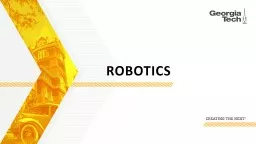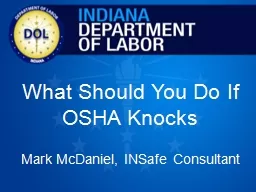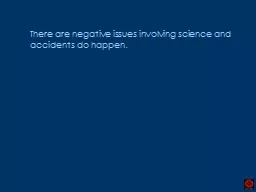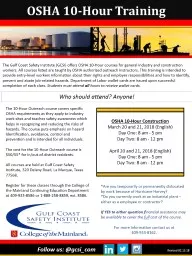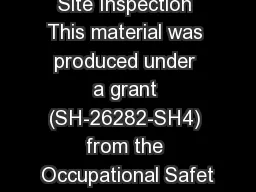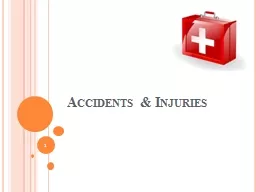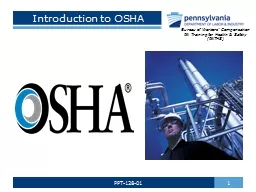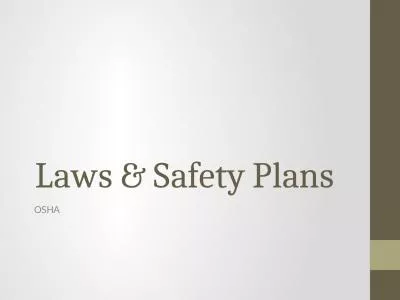PPT-Robotics Robotics Safety 2 Previous Accidents (From OSHA Web Site)
Author : cheryl-pisano | Published Date : 2019-11-05
Robotics Robotics Safety 2 Previous Accidents From OSHA Web Site 3 On July 21 1984 a thirtyfouryearold male operator of an automated diecast system went into cardiorespiratory
Presentation Embed Code
Download Presentation
Download Presentation The PPT/PDF document "Robotics Robotics Safety 2 Previous Acci..." is the property of its rightful owner. Permission is granted to download and print the materials on this website for personal, non-commercial use only, and to display it on your personal computer provided you do not modify the materials and that you retain all copyright notices contained in the materials. By downloading content from our website, you accept the terms of this agreement.
Robotics Robotics Safety 2 Previous Accidents (From OSHA Web Site): Transcript
Download Rules Of Document
"Robotics Robotics Safety 2 Previous Accidents (From OSHA Web Site)"The content belongs to its owner. You may download and print it for personal use, without modification, and keep all copyright notices. By downloading, you agree to these terms.
Related Documents

